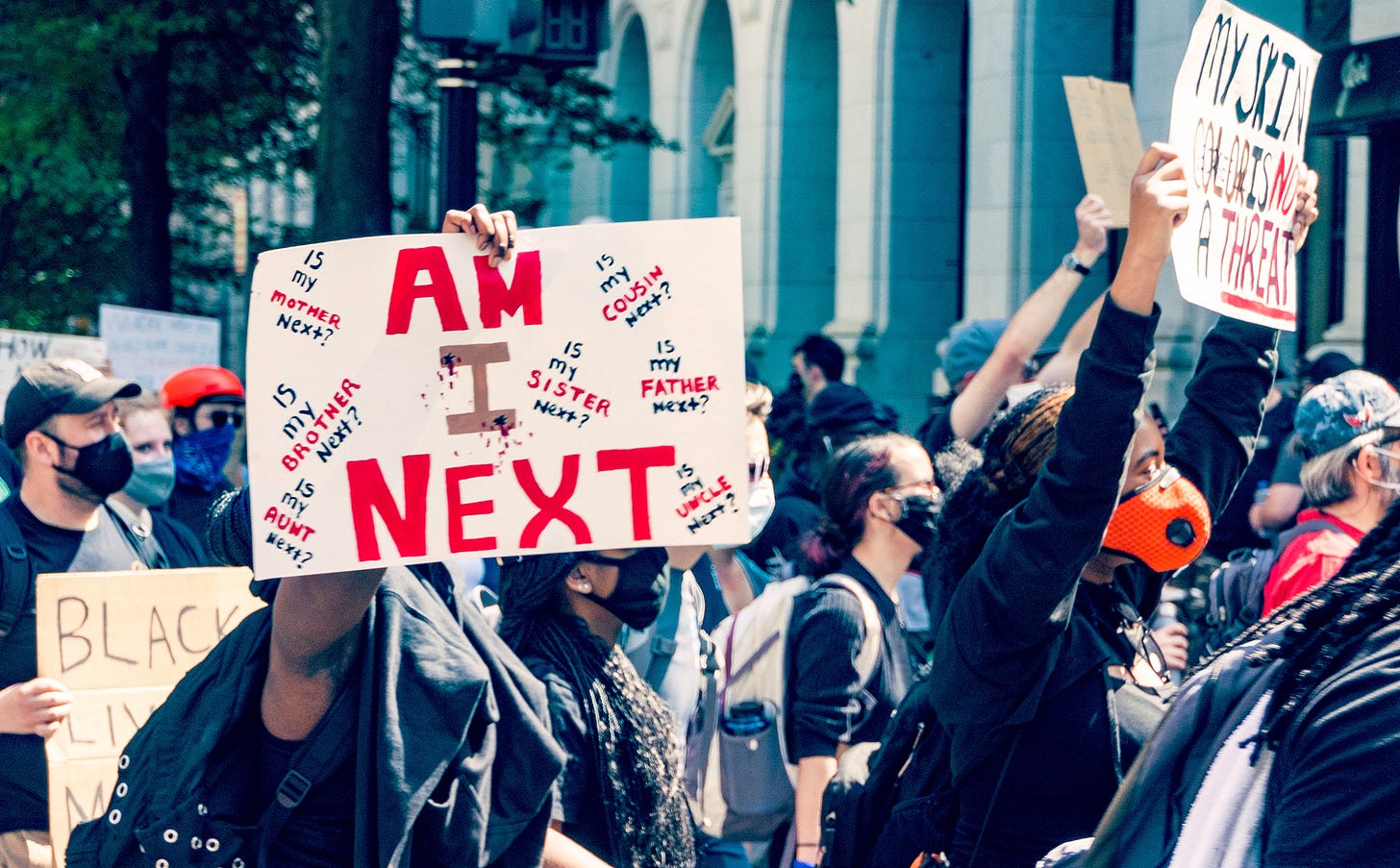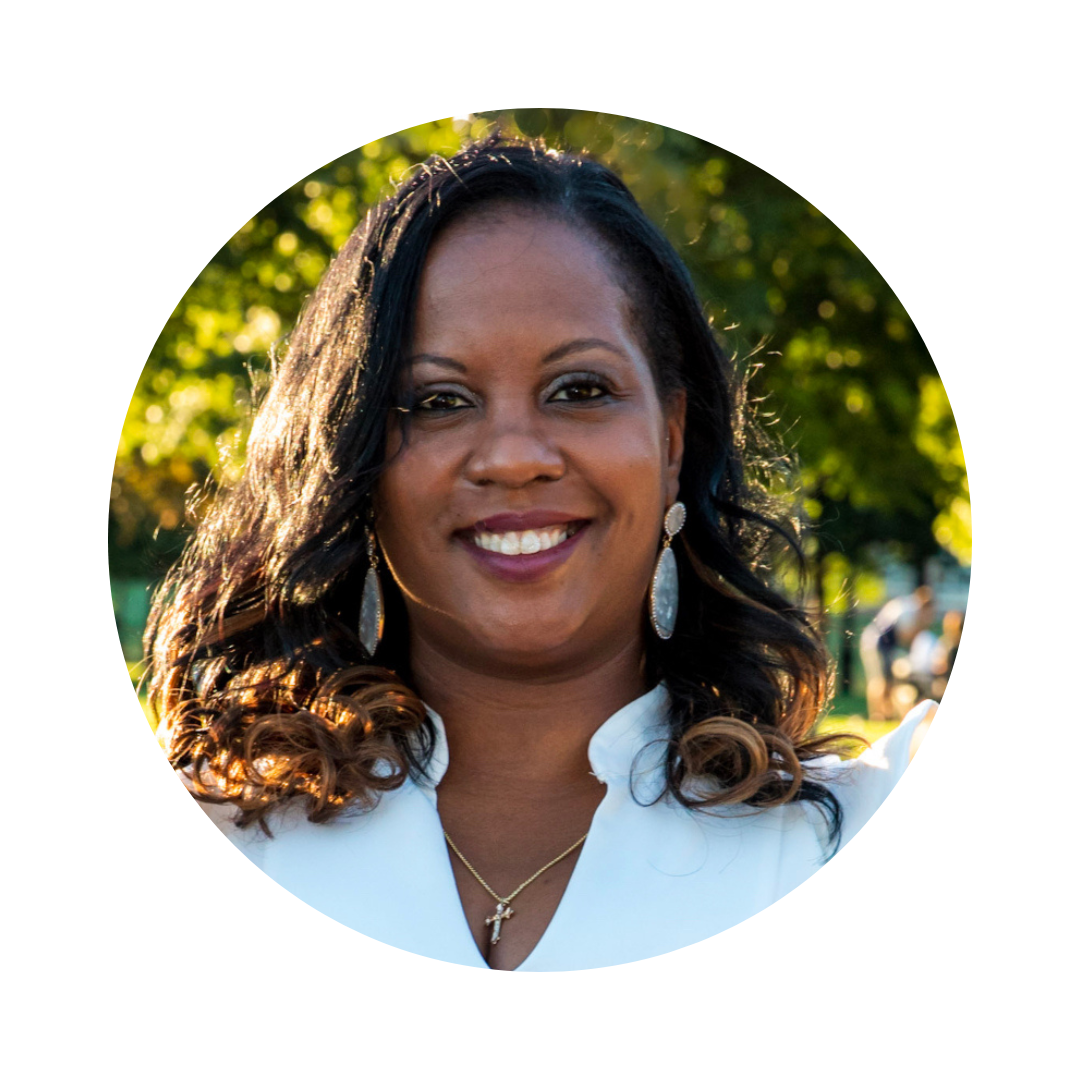Youth Understanding History to Tackle Social Injustice
By Ava Newton, Janelle Ridley, Ezra Tefera, MD, MSc, and Isiah Young

This article has been amended to include Ezra Tefera, MD, MSc, as an author.
Please click here if you’d like to listen to this via podcast.
A closer look at the history of education in America from a youth perspective. The Racial Justice x Tech Policy (RJxTP) team at Brandeis University, led by Director, Dr. Ezra Tefera and the Associate Director and PhD candidate Janelle Ridley recently traveled with high school research interns and game designers to the Equal Justice Initiative (EJI) in Alabama to research the history of and landscape of Black and brown people in the United States.
Introduction to our Internship
Our names are Ava Newton and Isiah Young and we are recent graduates at Danvers High School. For our summer we were given the opportunity to intern with Brandeis's Racial Justice x Tech Policy Program. During our internship, we focused on understanding the intersectionality of education in urban, suburban, and rural school districts, technology, and the school-to-prison pipeline. Throughout our research we focused on answering the question, “How can technology exacerbate the school-to-prison pipeline for black and brown young people?” We focused on this question throughout every step of our internship to further our knowledge of the research we were conducting.
For the first phase of our internship, we were fortunate enough to have the opportunity to join Janelle Ridley and the rest of her associates on a trip to Montgomery, Alabama to experience the Legacy Museum, the National Memorial for Peace and Justice lynching memorial, and participate in interviews about what we learned. During our trip to Alabama, our eyes were opened to a side of America’s history that we had never been educated about before. Our second phase was focused on furthering our research and connecting what we learned about America’s dark past of slavery and its continued effects on America and people of color.
Objective: Use an interdisciplinary approach to understanding the intersectionality of education in urban, suburban, and rural school districts, history, technology, and the school-to-prison pipeline.
Research Question: How can technology exacerbate the school-to-prison pipeline for young black and brown people?
This research question seeks to investigate the role of technology in perpetuating educational disadvantages for Black and brown students and explore the relationship between these disadvantages and the prison system. Our team seeks to understand how technology, such as unequal access to resources, biased algorithms, and surveillance technologies, may contribute to disparities in educational opportunities and outcomes for marginalized communities compared to suburban and rural school districts in America. Additionally, the question aims to examine the potential link between limited educational opportunities and the overrepresentation of black and brown individuals in the prison system, considering factors such as the school-to-prison pipeline, systemic biases, and socioeconomic inequalities. The research intends to shed light on the intersection of technology, education, and the criminal justice system, with a specific focus on the experiences of black and brown populations.
Phase 1: Montgomery, Alabama
By far the most eye-opening experience was the Legacy Museum. The Legacy Museum is a powerful testament to the history of racial injustice in America. It serves as a memorial and an educational resource, recording the legacy of slavery, lynching, segregation, and mass incarceration. The museum contained information about the dark side of American history that has seemingly been brushed over in our education. Something that we found particularly interesting was our lack of knowledge of how America was built. Originally there was never a consideration in our minds that enslaved people could have built our country. It felt as though a disgrace to our education that it was never brought to our attention that enslaved people built major landmarks such as the White House, the United States Capitol, Broadway, Wall Street, and so much more. The Legacy Museum brought well-needed awareness to this fact as well as how enslaved people were more than simply slaves, they were a commodity. While we had always understood enslaved people were just that, “enslaved”, we never quite understood that they were perceived as a commodity. Slaves were seen as valuable property, bought, and sold like any other commodity. Plantation owners, traders, and investors viewed slaves as a means to generate wealth and maintain economic dominance. What we find most sickening about this fact is that it implies they didn't even see them as people, they were no better than cattle in society's eyes.
As the Legacy Museum continued to bring recognition of America’s horrific past, the Lynching Memorial seemed to have a similar effect on us. The Lynching Memorial showcased the names of lynching victims throughout each of America’s counties. After witnessing name after name, county after county we were disgusted, to say the least. It was horrific to think that these were just the recorded lynchings. We learned that only a third of lynchings were recorded- to think that for every name that we saw, there were two more people lynched was gut-wrenching. The Legacy Museum and Lynching Memorial had a profound impact on us, and we strongly encourage all high school students to experience it. Overall, our trip to Alabama was an invaluable learning opportunity and a reminder of the need for justice, healing, and understanding in the world. What made our trip to Alabama an invaluable learning opportunity was not only the experiences and education we received from the Legacy Museum and Lynching Memorial but also the people we met and interviewed.
Phase 2: Furthering our Research
After our trip to Alabama, we began more in-depth research to understand the intersectionality of education in urban, suburban, and rural school districts, technology and how it plays a part in racial inequality, and the school-to-prison pipeline. While the Legacy Museum had brutally opened our eyes, it was the research we conducted after that allowed us to see the true history of America, the system, and its continued effects on America and people of color. To begin our research, we first had to take a deeper look at racial justice tech policy, understand the inequality within technology, and its imminent effects on the inequality gap in America. What we found worrisome was: AI systems are often biased against people of color. This bias can be introduced into the algorithms in several ways, such as through the data that is used to train the algorithm or through the way that the algorithm is designed. This bias can then be used to make decisions that have a negative impact on people of color. For example, facial recognition algorithms that are trained on data sets that are predominately white people and often lack people of color can lead to people of color being misidentified by facial recognition systems.
As we begin to use algorithms more and more, we allow bias to help us make misguided choices. Widespread algorithms are making choices around employment, education insurance, and law enforcement. An example of this bias was shown in one of the videos we watched. We learned courts now are routinely using predictive algorithms to make decisions in the courtroom. One popular and now widespread algorithm is used at the point of arrest to make bail decisions. ProPublica found that this algorithm was significantly disadvantageous to black defendants. It was twice as likely to assess a person of color as being high risk and was more likely to give a false positive to POC. It is clearly evident that as we continue to use algorithms to make choices their bias will lead to more long-term inequality if we don't do anything about it. AI has the potential to perpetuate racial injustice, but it can also be used to fight against it. It is important to be aware of the potential for bias in AI systems and to take steps to address it. We can do that by having a diverse team of people involved in the development of AI systems and overall, better more inclusive data sets.
After researching racial policy through statistics and data, we began to understand racism on a larger structural level. We started to better comprehend “The System.” "The system" is a term that is often used to refer to the complex web of institutions, policies, and practices that make up our society. Systemic racism is a form of racism that is embedded in these systems. It is not always intentional, but it can have a devastating impact on people of color. We learned the personal impact systemic racism can have on a person through different pieces of media such as, “When They See Us”, “On the Come Up”. “When They See Us” is a TV show centered around exposing the scary truth of police corruption through a true story. The human desire to feel a sense of belonging and love has been explained through Maslow’s Hierarchy of needs. The external circumstance that is wildly different is technology. We live in a world filled with tech, whether it be our personal electronics, social media, or even a smart refrigerator, we live in a world where technology and the internet play an ever more prominent role.
As we conclude this piece, we reflect on our enriching journey as interns at the Racial Justice x Tech Policy program at Brandeis University. Our experiences, from the poignant visit to the Legacy Museum and Lynching Memorial in Montgomery, Alabama, to our research into systemic racial disparities in technology, have deeply ingrained in us the intricate interplay between education, technology, and social justice. Our findings reveal the disturbing realities of AI biases and the perpetuation of racial inequalities, underscoring the critical need for diversity in tech development and inclusive data. This work is more than an academic pursuit; it's a call to action for dismantling systemic prejudices and envisioning a society where technology champions justice, not oppression. Education stands as our most powerful tool in this endeavor, a path to a future where equality and justice are not just ideals, but realities. Our commitment to this cause is unwavering, and we invite others to join us in this crucial fight for a fairer world.







